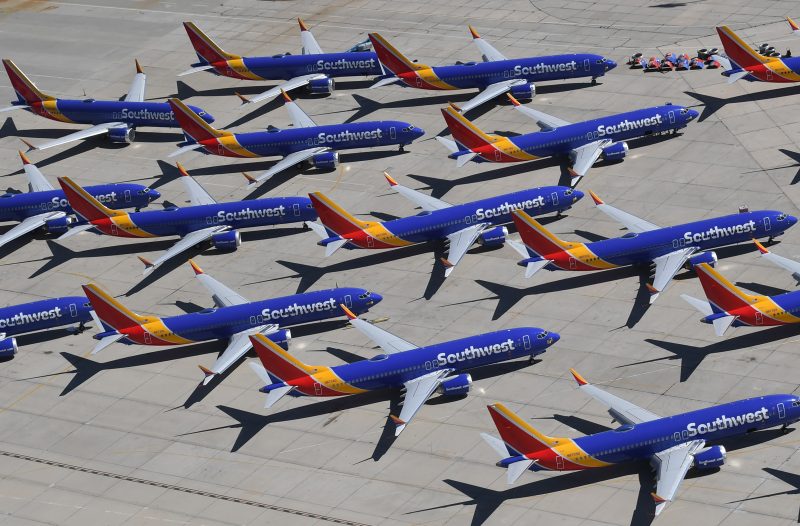European pilots ‘deeply disturbed’ by possible 737 MAX return
Boeing said last week that it had completed a software update to address a problem with the MAX’s Manoeuvring Characteristics Augmentation System
(Mark RALSTON)
Brussels (AFP) – European pilots said Thursday they found it “deeply disturbing” that the Boeing 737 MAX was already being considered for a return to service after being grounded worldwide following two deadly crashes.
Faulty technology in the 737 MAX was blamed for an Ethiopian Airlines crash in March and an Indonesian Lion Air crash in October, which together claimed 346 lives, and air safety agencies around the world banned it from the skies until a fix could be found.
The US Federal Aviation Administration (FAA) said Wednesday that Boeing has not yet handed over the proposed repair for the faulty automated control system for assessment, but some American carriers appear ready to put the plane back in the air.
American Airlines and Southwest have both scheduled flights using the jet for August in the apparent hope that it will be cleared to fly by then.
The European Cockpit Association (ECA), which represents more than 38,000 pilots from 36 countries, said the 737 MAX scandal had undermined confidence in the whole US air safety setup.
“For European pilots… it is deeply disturbing that both the FAA and Boeing are considering a return to service, but failing to discuss the many challenging questions prompted by the MAX design philosophy,” the ECA said in a statement.
Global aviation regulators are gathering in Fort Worth, Texas, on Thursday for a summit on the MAX as the FAA seeks to regain trust after being accused of dragging its feet in the crisis — it was the last agency to order the jet grounded.
Long considered a “gold standard” internationally, the FAA’s reputation has suffered amid scrutiny of the oversight process and reports it allowed Boeing to effectively self-certify some features of the MAX.
Boeing said last week that it had completed a software update to address a problem with the MAX’s Manoeuvring Characteristics Augmentation System (MCAS).
In both recent crashes, the MCAS pointed the plane sharply downward based on a faulty sensor reading, hindering the pilots’ efforts to control the aircraft after takeoff, according to preliminary crash investigations.
ECA President Jon Horne urged Boeing to come clean about its approach to design, suggesting the MCAS appeared to have been tailored to avoid airlines having to pay for expensive pilot retraining.
“Boeing essentially built a plane to a wish list that would sell well — meeting attractive fuel, cost and performance metrics, with minimal additional pilot training requirements,” Horne said in the ECA statement.
“But the problem is that it seems there was no independent regulator to look at this in-depth from a safety perspective and scrutinise what appears to be a design philosophy driven by commercial priorities.”
Disclaimer: Validity of the above story is for 7 Days from original date of publishing. Source: AFP.


